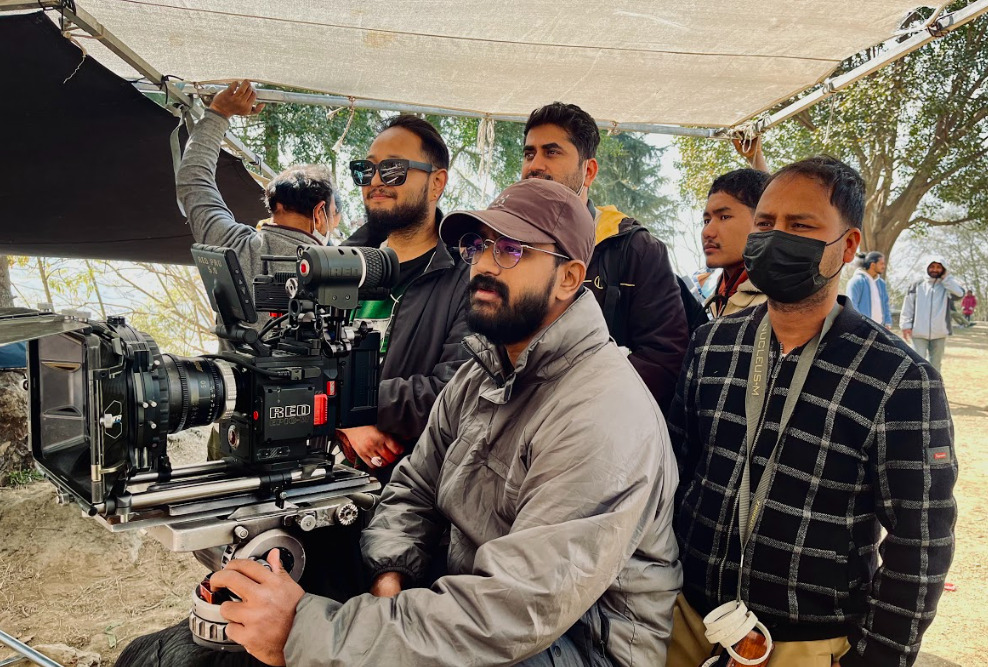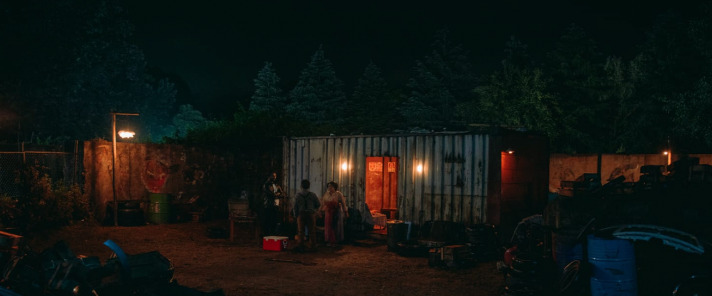Filming for Lion’s Club – Pieter Miller from Image Base
At Kathmandu Films, we strive to provide the best filming services in Nepal. Our connection with the local community, expertise in handling equipment, understanding of permit structures and staff capable visionaries all combine to make a package that is undeniably make your filming process smooth.
This why we have continuously had the chance to work in international platforms and deliver the best.
As Pieter Miller a producer from Image base, Chicago based video, and event agency traveled to Nepal with visions of telling the Lion Clubs stories, it was on us to film some of the local Lions Club in Nepal.
The 8 day shoot that followed:
Day 1: The onset of filming journey
The equipments were thoroughly checked, inspections made by our expert Cinematographer himself. There is no room for errors. We arrive prompt and ready and add in a few more equipments suggested by our experts.
Day 2: Understanding Our Location
BP. Koirala Lions Center for Ophthalmic Studies
It was May 6th, Sunday. We started early in the morning at 7 The journey started from our hotel to BP KOIRALA LIONS CENTRE FOR OPHTHALMIC STUDIES. We reached the hospital and was welcomed by the Director Mr. Anand Sharma. He briefed the crew about the institute and after that, we got busy! Scouting the area to find spots that delivered the best shots. Delegations were in place and other half of the team began with equipment setting and interviews, there is no time to lag here, only diligence and efficiency. The 5 interviews went by smoothly giving us enough time to V-rolls.
Day 3 Interviewing The Subjects i.e students and doctors
BP. Koirala Lions Center for Ophthalmic Studies Rural Clinic
The next morning, we headed to the Institute for the Rural clinic team. We traveled with the team to Nepal-Korea Friendship Hospital, Bhaktapur. Interviews all lined up with professionals and students running the rural clinic, trying hard to capture their unique perspectives on working in such clinics.
We planned this tightly to get the most out of each day hence we did not stop there, heading to the town Bhaktapur where Lions club had established an eye care center. There were children coming for inspection and diagnosis there and it was perfect opportunity for us to capture some V-rolls and interviews with students and the Doctor who was conducting the treatment.
Day 4 Unfortunate Weather and Gurkhali Spirit
As usual day 4 started early at 7 am, when working in a schedule like this it imperative that we make the most of our time, no time waster or spare. The travel that happened on this day to Gorkha was marked by challenges and triumph. While our competent team went ahead got the interviews from 2 Engineers, we battled the questionable weather that did not lets us work beyond sunset. The plan was drive past in the dark to 2 hours more off the road but we had to make a judgement call, to rest recuperate start afresh. When working with heavy equipment and a big team we have take a lot of things into consideration. As an ethical company it is our utmost duty work in a manner that is safe for our team, not over exert them. This worked out well for us in the end as with a rested self and an open mind we were able to quickly locate a place that beckoned to be filmed; a school.
Day 5 All Work & Then Fun
A Sweet Gesture At Work
The schools were a great example of what the Local Lion Clubs were able to achieve hence we made it our priority to do our best to illustrate that. We filmed the teachers and classes. After the V-roll we started interviewing students. When we were wrapping up, the school prepared a nice farewell program for us. The whole school was singing songs for us and the principal was handing us a small token of love. Perhaps one of the most rewarding aspects of venturing into the rural areas for filming is our connection with the locals, handling big equipment is an immediate ice and breaker and from then on the bonds keep forming.
Day 6 Traveling Back To Kathmandu
Travel Back to Kathmandu Next day, we traveled back to Kathmandu. The weather was nice. The wind was cool. We took a much-needed rest on our way back.
Day 7 An Inspirational Story
We are filming in the streets of Teku for the day. It was for a Mobility Cart story. Specifically, Chatra Bahadur Gurung’s story. He received the mobility cart from Lion Ramchandra Dahal, who is an amazing person himself. Gurung narrates his story of how he received the three-wheeled cart that changed his life, enabling him to be independent. The essence that we captured through this story was heartwarming and great representation of what Lions Club Stood for.
Day 8 The Last Day Time To Wramp Up!
Wrapping up a shoot is always bitter sweet but it needs to be done. Hence, we started our day early in the morning, heading towards Dhulikhel where the Global action team meeting was being held. We filmed the whole event and interviewed some of the members of the Global Action team. After the shoot, we headed straight to the airport to drop our clients off.
Working with international clients always exciting because it makes for a great exchange of knowledge they teach us international techniques while we educate them on filming in complex climates like Nepal. At the end both parties grow and become embody a unique blend of skills. A work exchange that translates skill development, teamwork and an an amazing film.
Meta description:
Kathmandu Films always strives to provide the best filming services in Nepal. Some time back, we worked with Pieter Miller, a producer from Image base, to film some of the projects the local Lions Club in Nepal were participating in.
Blog 8 Post Earthquake Filming in Nepal
Our Response To The Biggest Trauma Nepal Ever Experienced
The filming scenario in Nepal was rattled after the major earthquake of 2015. While the local film production carried on shortly after, the international crew reduced greatly due to the posed danger of after shocks. Although some filmmakers persevered even they had difficulty adjusting to the new changes in filming process and the legal processing for permits and other required documents that happened post earthquake.
The Impact the Earthquake Brought To Filming
It is now 2018 and things are slowly changing, we are past the 2015 earthquake and that *almost* claimed that the filming industry in Nepal. But which damage at such a great intensity came with came with a few changes all filmmakers needed to adhere to.
Drones prohibition
Filming with drones without a legal permission has been deemed as an illegal practice in Nepal after the 2015 earthquake. The drone permit costs more than the drone itself. At the same time, it is incredibly difficult to obtain any drone permission.
Despite these changes through storytellers like National Geographic and Kathmandu Films kept going, sharing the stories of people post the earthquake educating the world of the damage it had done.
Working Through Consistent Fear
The number of international filmmakers coming to Nepal reduced greatly after the earthquake. The locations were deemed unsafe, rumors were a blaze of recurrent quakes. Nepal has moved on since then but for the entire world who viewed the quake from the lenses of new channels trusting Nepal is still relatively harder.
That being said, post 3 years things do seem to be changing, evolving as more international companies flock to Nepal for the versatility it offers.
Traveling Is The Biggest Challenge
A third world nation infrastructure in Nepal has been questionable, however with slow responsive government and the earthquake coupled with unique landscapes, travelling with all that equipment always requires a lot skill, determination and grit. Something we have plenty of!
Damaged History
The quake left a mark on many monuments, although officials are working hard to restore these historic places the imprint of the great earthquake will perhaps always remain. Ingrained both deep in memory and some of the rather artistic monuments.
While locations outside of the valley are now in the clear, the effects of the quake rings in our memory causing the filming crew to work with caution and contingency.
The earthquake of 2015 brought some changes to our lives and in the filming scenario in Nepal. However, Kathmandu Films had been actively working and filming to bring the stories into light even during and post the earthquakes. The earthquake shook our country, but we stood strong through it, filming for over 90 channels covering the devastation. Despite the sadness of the calamity, we were able to add to our knowledge and skill to our experience.



